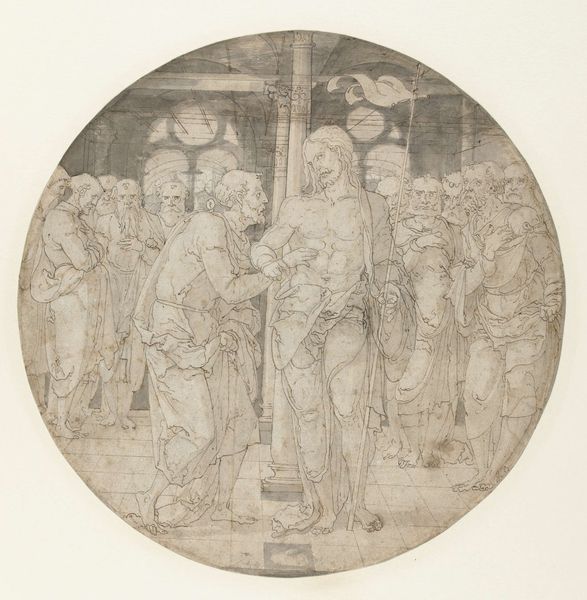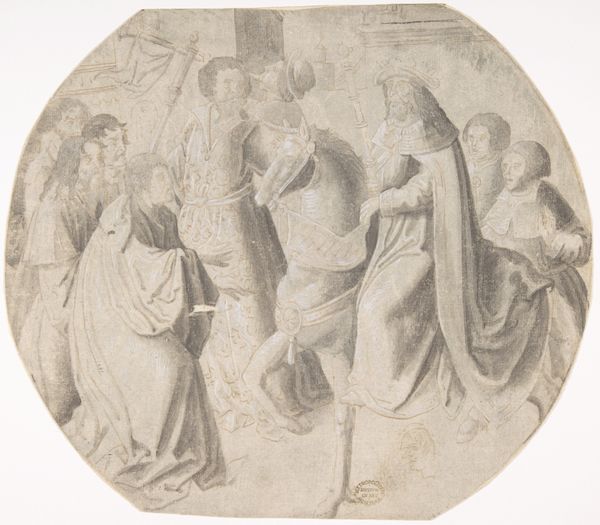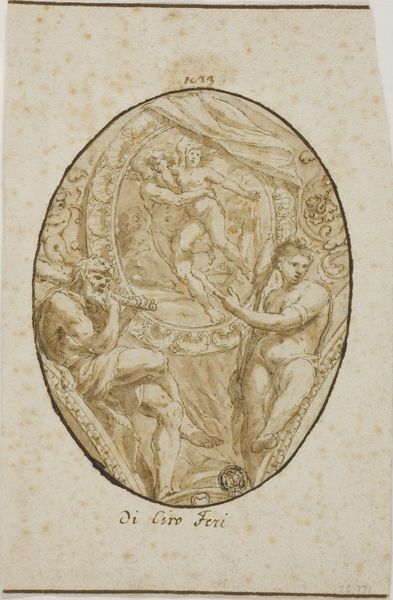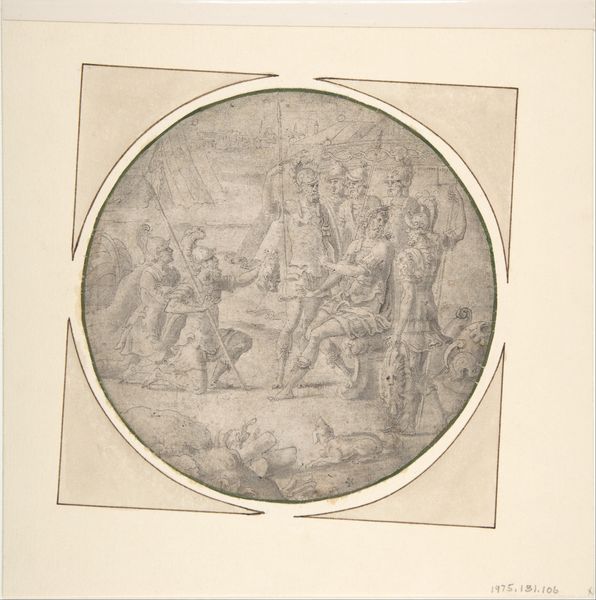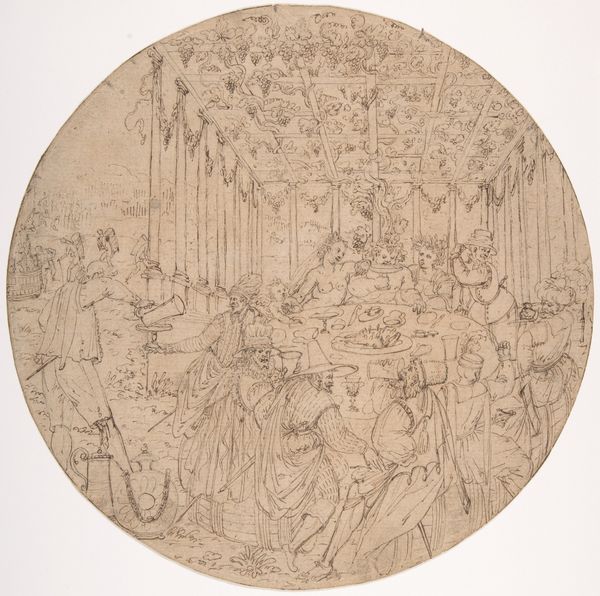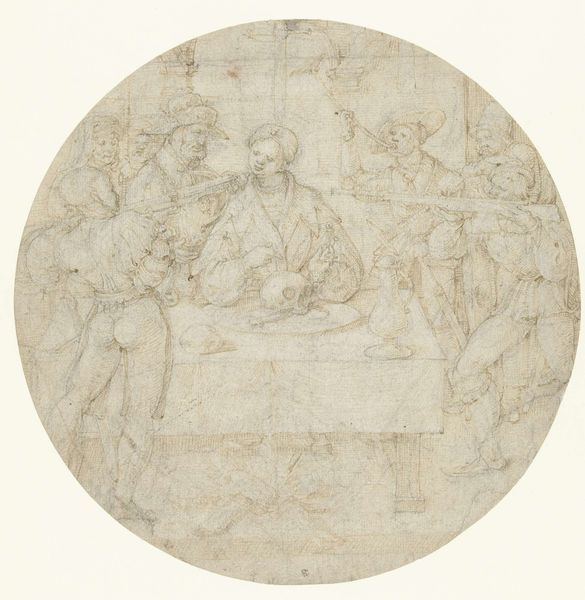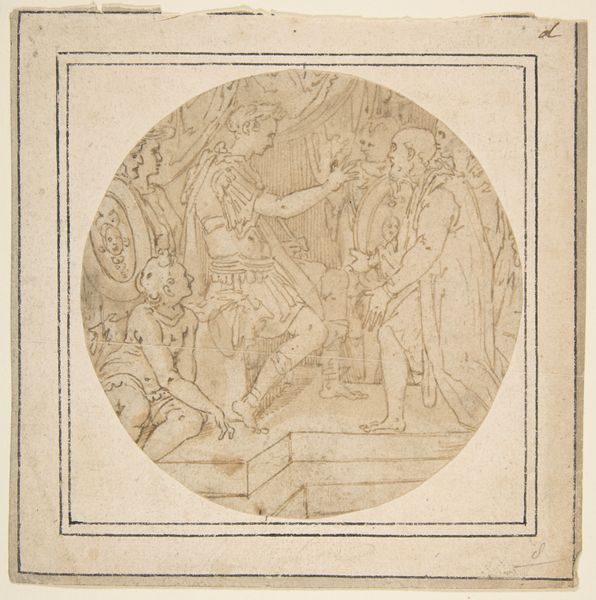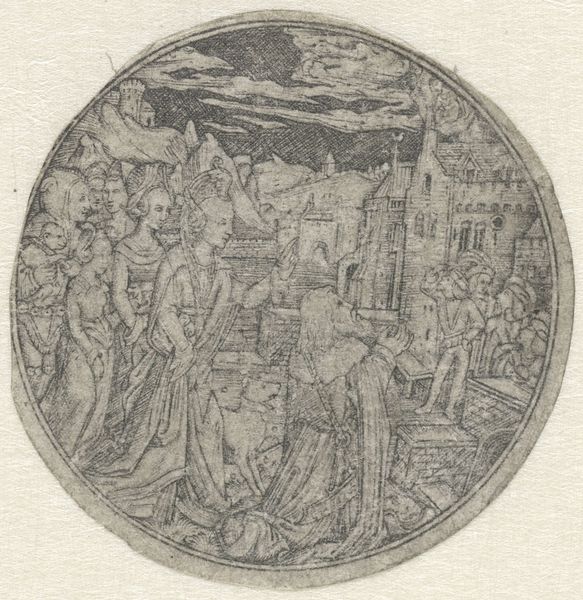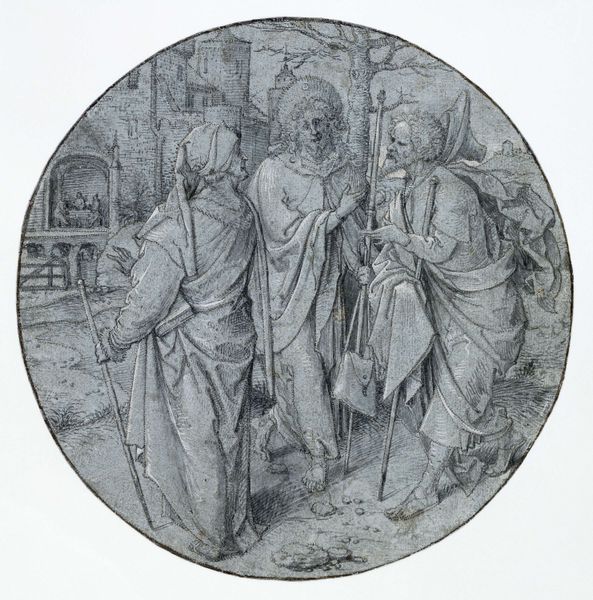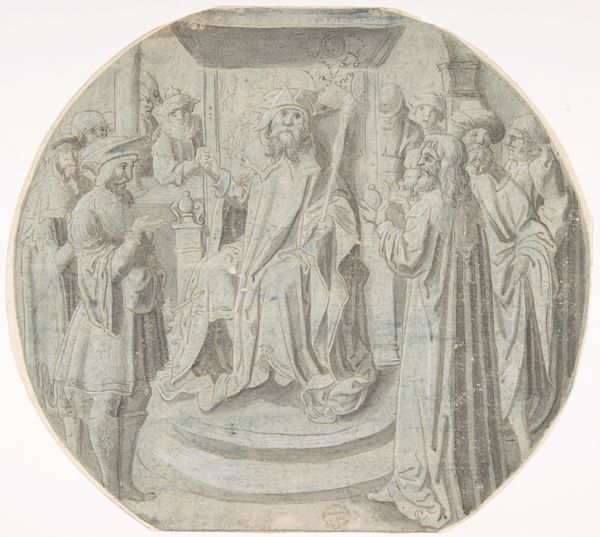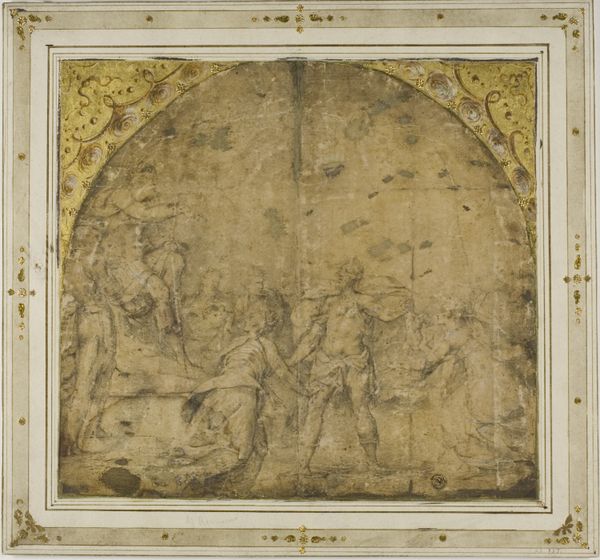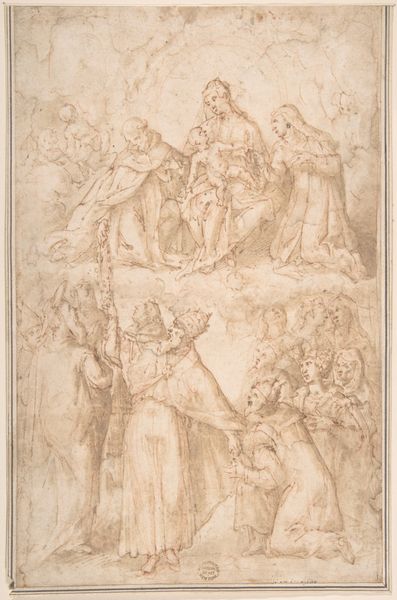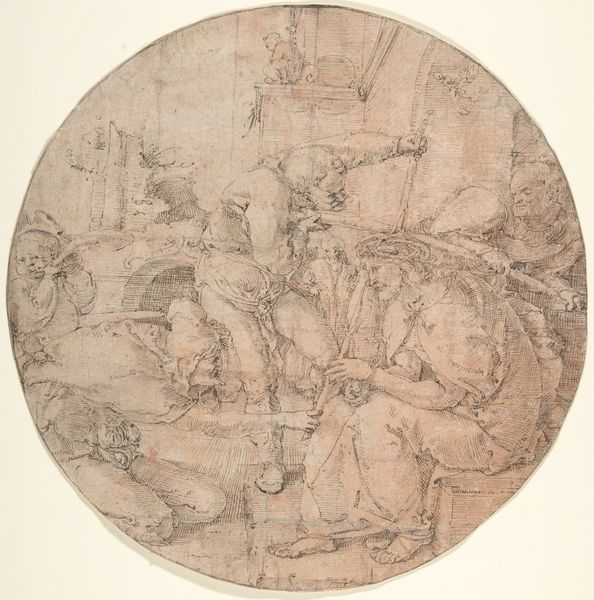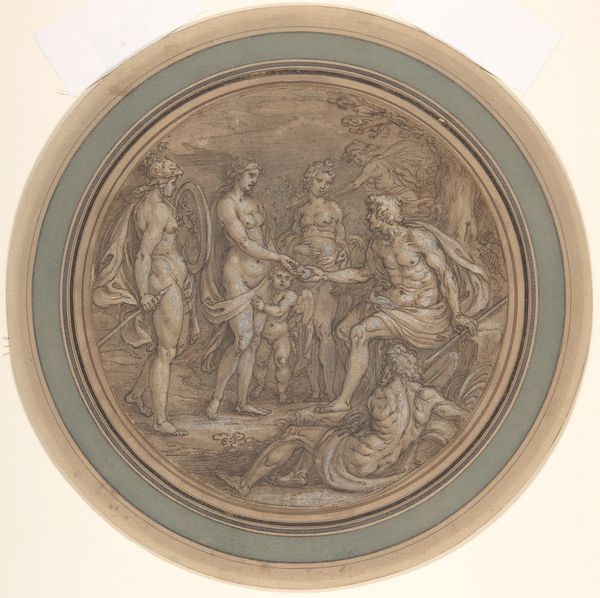
drawing, paper, pencil
#
drawing
#
high-renaissance
#
narrative-art
#
figuration
#
paper
#
pencil
#
history-painting
Copyright: Public Domain
Art Historian: Here we have a drawing by Raphael, rendered around 1510 to 1514. It is entitled "The Unbelieving Thomas." Curator: My initial reaction is that the composition feels both classical and ephemeral; like a faded memory rendered with incredible grace. It's all so delicate and ethereal. Art Historian: Indeed. The scene depicts the moment when the Apostle Thomas, doubtful of Jesus's resurrection, is invited to touch the wounds of Christ. This narrative speaks to faith's struggle with empirical proof. The symbolism here is rich; Christ's willingness to show his wounds is a powerful offering. Curator: The grouping is very interesting too, the arrangement of the figures, their robes. The figures are rendered almost identically with variations in line that give such subtly. Notice the flow of the lines which moves from left to right toward the contact between Christ and Thomas. It creates the scene's central focus with their hands. Art Historian: And the psychological depth! Thomas represents the part of us that demands concrete evidence, while Christ's act embodies divine patience and compassion. This resonates across centuries; that struggle between doubt and belief is perpetually relevant. Curator: Although this is a preliminary sketch, the intentional use of subtle shading gives an idea of where Raphael would apply color if this was painting or fresco. This distribution creates dramatic tensions between dark and light, thus underscoring the emotional import within the act. Art Historian: Consider, also, that such depictions reinforce faith during times of uncertainty. These stories provide assurance and guidance and reflect spiritual concepts of proof versus trust. That these figures stand shoulder-to-shoulder tells its own tale of how communal strength forms to face individual doubts. Curator: Looking closer, I’m struck by the way Raphael conveys three dimensions through just delicate cross-hatching and shading. He achieves a surprising level of realism and detail. Even just his rendering of garments create a sense of palpable volume for his human forms! Art Historian: A truly compelling piece. It illuminates fundamental aspects of human spirituality and faith. Curator: Absolutely. Seeing his careful consideration regarding space, composition, and emotion offers remarkable insight to the mastery of Raphael.
Comments
stadelmuseum about 2 years ago
⋮
This version of the Incredulity of Thomas – presumably executed as the final working drawing for a bronze relief in the Chigi Chapel in Santa Maria della Pace in Rome – was gone over in the eighteenth century in an effort to preserve it. We must therefore look very closely to detect what remains of Raphael’s original silverpoint drawing on pink prepared paper. In the process, we discover that he not only supplied the contours of the figures – who are arranged in a manner suitable for a relief –, but also modelled them with hatching.
Join the conversation
Join millions of artists and users on Artera today and experience the ultimate creative platform.
